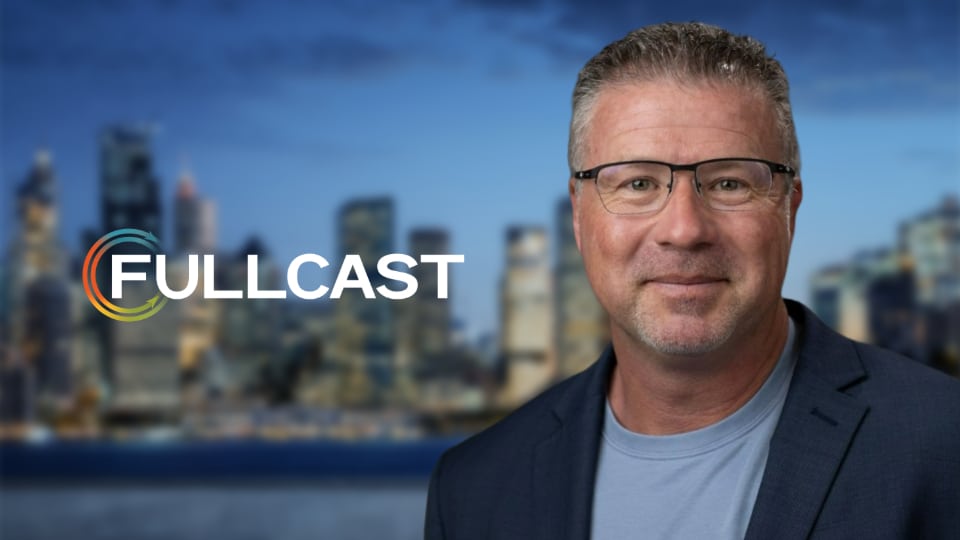Making Sales Ops Strategic: An Interview with Erin Bush
We chatted with Erin Bush, who has served in RevOps leadership roles at LeanData, SalesLoft, Pendo, and more.
Erin graduated from Georgia State University with a Bachelor’s in Business Administration/Business Economics. She is a certified Salesforce Administrator and is currently working as a Revenue Architect at Winning By Design. Erin is an expert in all things RevOps, and we’re glad to have had the opportunity to pick her brain for this Fireside Chat.
Background
Dharmesh Singh: So, it’ll be great if you can just walk us through your background right. How you got into ops and your experience going forward, and then take it from there.
Erin Bush: Sure. So my background originally is in sales. I started out early in sales development, managed a sales development team and then went into being an AE. So at that point, I, of course, was in my twenties, I knew everything. So I saw the end to end sales process from the prospecting side to the closing side and saw all of the gaps along the way and the things that were affecting us, the sales team that were not efficient or not working correctly and I wanted to build a better machine. So I’m wanting to make sure that we didn’t have to deal with hundreds of leads that weren’t prioritized.
This was the early days of marketing automation and sorting through those manually and not being efficient with our time or having better data there and better automation there or not knowing what our commission plans would be. Not having predictability and fairness around things like pay. That led me to learn what operations were, and start to address some of those very tactical things that would help not just my deals, but the whole sales team. So that’s what got me into operations. And now for a number of years, I’ve been working in operations, mostly for B2B software companies and going from those very tactical things into a lot bigger, more strategic company type operations work.
Strategy Ops Vs. Tactical Ops
Dharmesh Singh: As you think about ops, what was it that would make ops roles strategic in those fast growth companies? Sometimes you lose sense of what is really strategic versus what’s tactical, working in the business versus on the business. And so, how do you balance those things out as you were scaling those companies?
Erin Bush: I sort of organically grew from those very tactical operations into a more strategic ops role. And for me, it was looking at the things that were coming from sales, coming from marketing, all of these day-to-day requests that everyone gets and starting to see the big picture and fit the pieces together and understand from marketing to sales, to customer success, what are they trying to do that is aligned or not aligned? How do we have a conversation to make sure that we can create some better alignment across these teams?
And the way that that happened for me was starting at SalesLoft with marketing and sales. Actually looking ahead to say, what do we want to do this year? For us, it was moving into an account-based model. So we wanted to not just look at our inbounds because we were getting great growth with inbounds, but they were not necessarily the type of companies that we wanted to grow into. We were growing into more enterprise companies. So we said we need to go into an account based model there. So we asked:
- Who do we need to sell to?
- What are these companies?
- What are the roles?
And then working with marketing and sales to actually put that plan in place. So it became a very collaborative process. And similarly on the customer success side, we found that we were again growing very quickly and we had a ton of new customers, but we were not being very structured in how we engaged with those customers throughout the year.
So from onboarding into renewal, what do we need to do to ensure that:
- They’re successful
- They’re growing
- They’re getting valued
- That we’re all marching in the same direction, building those plans and determining how we measure success in those things
And that’s where I think ops can elevate from just executing on the plan to building a better plan.
Dharmesh Singh: So, you had a lens of looking at the customer life cycle from marketing to sales, to customer success. Our view is that really there has to be one ops team, but your customer doesn’t care what your org charts so you have to have the lens of an end-to-end view. And if you’re an ops person just focusing on sales, you’re going to get caught in the tactical stuff.
Erin Bush: I think that connects really well to what you were saying earlier about working on the business.
- How do we communicate across departments?
- How do we evaluate proposed initiatives and projects?
- How do we execute and measure on those projects?
And so the structure of ops is a big component of that. I’ve definitely advocated for centralizing ops, so that you do have that alignment. You have one connected set of systems that everyone uses. It used to be that you have a CRM and you’re loading lists or manually inputting leads. It was very much an island, but now everything’s connected from marketing and sales and all the way through. You have one architecture of systems, one set of data that is flowing through these systems. You have one customer life cycle. So it makes sense to have one team manage those things.
Elevating the Ops Role
Dharmesh Singh: You’re right. You have to think about:
- What’s the plan?
- How do we make this plan real?
And so the question for you is:
- How do you inject yourself in those discussions?
- How did you elevate the role of an ops in those kinds of places where typically most people will just become an audit taker?
Erin Bush: You and I have had some really good conversations about this, about the feedback loop of planning, where you get a number and you could be really simplistic about it and say, okay, the number is $10 million. We have a million dollar quota, let’s hire 10 salespeople. But it’s a lot more complicated than that when you’re trying to plan out for 12 months at a time. A lot changes in that time. You may have two salespeople; now you’re going to have 10 by the end of the year. What sort of hiring schedule, ramp schedule, moderated quotas, sales enablement will you use? And then there are a lot of questions about, if we do it this way, if we focus on this geo or this industry, how will that influence our plan?
Where ops can get involved is saying, if we do this, this is how it will impact the plan. And using that conversation to create that alignment.
Dharmesh Singh: You mentioned sales support. And that’s a great way to look at it, but are you doing sales support work or are you doing sales operations work? Are there people think of those two there’s one bucket of sales ops, but it’s really, am I supporting, or which is, I’m just taking all of them to play whack-a-mole all day, or am I leading with a point of view?
Erin Bush: And I think those are two categories out of a number, right. You can be strategic in a number of areas. You can be, you know, deal desk. And that seems very sales support and very tactical at the moment. But you can start to build an expertise around. Now we know how to approach deals better to negotiate better, to be more efficient, to build this into our systems and future projects. So yeah, for a number of different areas, you can, you can evolve from just being tactical to building it into an operation strategy.
Dharmesh Singh: Okay. So now we want to be, give the feedback. We want to give the feedback to the managers and everything else. Ops generally is flooded with metrics. It’s like an NFL game, you got tons and tons of metrics to measure, right? I’ve seen mostly them, they’re looking at in a pipeline reviews and close rates and win rates. But what are the kinds of things that you would measure if you want to become more strategic to close that feedback loop? What are the kinds of things that you would say, yeah, that’s par for the course, you have those kinds of instruments, those metrics, but where should you be really spending time?
Erin Bush: I mean, I think the metrics question is it can be a lot of time if you’re always getting a different angle that’s being requested. Can we look at it this way? Can we look at it this way? And then you end up with dozens of different metrics. The way that I approach it is when you’re looking at your plan, we want to have this revenue number. That means;
- This number of wins
- This number of opportunities
- this number of demos
Looking at those key conversion points, that’s where you can start to set. What is the right number for each of those things and where do we start seeing risk factors and when things are working and not working? And when you start to see things being very different from what is a market standard or what you would expect? That’s when it makes sense to dive in and go deeper. There are so many different ways to look at the data that I think when it comes to KPIs, you have to pick those few and then just dig deeper when you’re having to figure out what’s going wrong. Usually.
Dharmesh Singh: You brought up the revenue number now. Can we break down that component? Are we getting new customers? Or our retention goes to CSM and we know that that’s it. If everybody aligns on those numbers, we can take down lagging indicators and teased if we need to, but keep it very simple, just focus on those things. Leadership only cares about, am I meeting my number or not? Everything else is noise.
Erin Bush: Right? Absolutely. And what are the inputs to that number? Like you said, where if you break down revenue between new business and existing customers, and then you look at what is growth? Is it organic growth? Is it cross sell and upsell? You do get more specific for each team, but it all has to tie back to that one plan.
“Mopping the Floor Instead of Turning Off the Faucet”
Dharmesh Singh: Why do most of the ops teams focus their time on tools, evaluation, CRM configuration? If you’re just going to spend the time doing that, it’s not going to allow you to elevate your green.
Erin Bush: That is mopping the floor instead of turning off the faucet. As I was putting my thoughts together yesterday, I was thinking about how when I’ve been on really good teams, how we’ve done our planning, how we try to get away from a lot of that. And some of it is acceptance. Accepting that there are always going to be things that bubble up, but how do we plan for them? So, to the original question that we were talking about today, how to get strategic for ops, my number one thing is to look at the company strategy and align ops to that. What are our goals? Maybe we’re really focused on growth this year, new customer numbers, and what projects support that.
So maybe there is something within our systems that we want to look at, phone call recording and analysis and coaching so that we have better conversion rates. So maybe we need to implement a CPQ system so that we have more efficient contracts, enclosures and things like that. So it does connect back into technology projects a lot of the time, but looking at our company strategy, how we will effectively hit those goals and what is the ops component of it? Because very often there’s a sales component.
We need to close this number of deals. And then there’s an ops component we need to have the right tools in place to close this number of deals. So looking at all of the players in each of those projects, and then just understanding that there is a percentage of time that the ops team is going to spend on those pre-planned long-term projects. And then a percentage of time that’s going to be on adhoc things that come up. We get ahead of it as much as we can, but then we use those ad hoc things to help us plan for what we need to do next so that we don’t keep mopping up the same spill.
Define the Mission
Dharmesh Singh: How should RevOps define their mission relative to the overall go-to-market strategy? In a growing organization, there may not be a big sales strategy team. It’s essentially the corporate strategy that’s coming down and you could align yourself with that. And as you grow, you’ll have a sales strategy you have to work in partnership with the strategy team right.
Erin Bush: Absolutely. And looking at not just sales strategy. At Lean Data, one of our biggest strategies was to make everyone an ops star. So we wanted our customers to be successful. And how do we make sure that they’re successful if they buy our product,
- Do we make sure that they are using it?
- Do we need to help them and teach them how to use it better?
- How do we track what’s happening with that so that we can see success for our customers?
So just looking again at the ops component there.
Bridging the Implementation Gap
Dharmesh Singh: How does rev ops break down the silos right across the organization to drive the metrics? You have to take a lens of the life cycle of the customer. There are different teams owning those things, but you have to share how a shared lens on what are those metrics is going back to the corporate goals and say,
- Are we acquiring new customers?
- Are we looking at retention
- Who owns those things and what each of those metrics matter?
Erin Bush: Very often, ops can be the bridge. When I was at SalesLoft, one of the things that we really wanted to improve was our implementation success and timing. We would have people really excited to become customers and close the deal. And then not really understand what implementation would take. Sitting down with the implementation team to figure out what information was not being passed over from sales, so they could go into an implementation already knowing what that customer needs and what they expect and using the systems that we had to build that bridge. You can jump right in to do a successful implementation. So you can bridge those who are just focused on their job, and help them to know what to hand off to the next person in the chain.
Identify Your Team’s Strengths
Dharmesh Singh: I think that’s super important. So, moving forward now, as teams are growing and people are in careers and ops. They’re asking:
- How do I have that discussion?
- How do I elevate my own skill sets?
What would your guidance be for them?
Erin Bush: I think that, for each person, it’s really important to look at your own super power and your own strengths to figure out where you want to focus. The ops people that I’ve worked with, some have been brand new interns still in school, and they were just absolute rock stars at technology and building out Salesforce and that’s where they want it to grow and technology leadership, or really good at understanding these sort of strategy questions and process and in communication and growing into more of a project management and process leadership. It’s really looking at each person, where do you want to focus? And then understanding that there is opportunity in all of those things that companies can, or are always going to be building a better machine when it comes to technology or process or how we do projects. So, really looking at what you do day to day and sort of pivoting your, your own career and building the career that you want, because this is a really new career area. You can absolutely build it based on your own strengths.
Dharmesh Singh: Erin Bush, today, reflecting back on Erin Bush, 10 years ago, 15 years ago. What are the kinds of things do you know now that you would tell that Erin?
Erin Bush: That’s a really good question. I think that when it comes to falling into this role, I really did just fall into this role. I studied economics in college, and then I went into work in technology. So it was not really the plan that I had. I think that I would tell myself that it’s okay to ask questions, to challenge the way that things are done. The way that someone thinks things should be done. Because things are evolving. This industry’s evolving, the technologies evolving. So, I think I sort of came into sales and operations with the idea that everyone else knew how it was supposed to be done. And it had to learn rather than challenging it and taking things into new directions than they’ve been in the past.
(This interview has been edited for clarity.)










